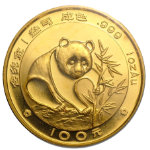Understanding Gold Coins: What They Are, How to Identify Them, and What They’re Worth


Written by:
Dave Alpert, Owner & Appraiser – specializing in gold, diamonds, jewelry, coins and precious metals. Call to set up an appointment.
Gold coins are one of the most popular—and most misunderstood—forms of precious metal to sell. Some people inherit them and have no idea what they’re worth. Others pick one up at a yard sale and wonder if it’s even real. And many simply want to know if now is a good time to sell.
At New England Diamond and Jewelry Buyers, we’ve seen just about every type of gold coin you can imagine—from 1800s U.S. Liberty coins to modern-day bullion. In this guide, we’ll break down the basics of gold coins so you know what you’re holding—and what it might be worth.
What Is a Gold Coin?
Simply put, a gold coin is a round piece of metal made mostly—or entirely—of gold. But that’s where the simplicity ends. Gold coins vary widely in terms of origin, purity, size, and purpose. Some are government-issued bullion, others are circulated currency from decades ago, and a few are highly collectible numismatic pieces.
If you’re holding a gold coin, the next step is understanding what kind it is. That’s where we come in—but it also helps to know the basics yourself.
Types of Gold Coins We See Most Often
1. Bullion Coins
These are modern coins minted for investment purposes, not for circulation. They’re typically marked with weight and purity and often come from government mints.
Common examples include:
- American Gold Eagles (U.S.)
- Canadian Gold Maple Leafs (Canada)
- South African Krugerrands
- Austrian Philharmonics
- Chinese Gold Pandas
These coins are valued primarily for their gold content, although some years and conditions carry collectible premiums. We evaluate them based on weight, purity, and current market price.
2. Pre-1933 U.S. Gold Coins
Before 1933, the U.S. minted gold coins for everyday use. These are no longer in circulation, but many still exist in private collections or family estates.
Popular examples include:
- Liberty Head $5, $10, and $20 gold pieces
- Saint-Gaudens $20 Double Eagle
- Indian Head designs
These coins often carry numismatic value, meaning they may be worth more than just their gold weight. Condition, mint mark, and rarity all play a role.
3. Foreign Gold Coins
Coins from Europe, South America, and Asia often appear in collections. Some were used as currency, while others are strictly bullion.
You may come across:
- British Sovereigns
- French 20 Francs
- Swiss Helvetia 20 Francs
- Mexican 50 Pesos
- German Marks and Italian Lire (pre-Euro)
Foreign coins may be measured in grams, ounces, or other standards, and not all are pure gold. We help identify these details clearly during your evaluation.
How to Tell If a Gold Coin Is Real
While most gold coins are easy for us to authenticate, it’s understandable to want some assurance before you bring it in. Here are a few things to look for:
- Markings: Real gold coins usually include weight (e.g., “1 oz”) and purity (e.g., “.999” or “22k”).
- Sound: Tap a real gold coin gently—it should produce a high-pitched “ping” instead of a dull clunk.
- Color and Weight: Real gold is dense and warm in tone. Fake coins often feel too light or too yellow.
- Magnet Test: Gold is not magnetic. If a coin reacts to a magnet, it’s likely not solid gold.
While these home tests can help, they’re not foolproof. Some counterfeit coins are convincing to the untrained eye, and some real coins show heavy wear. That’s why we offer free, in-person testing and evaluations, so you don’t have to guess.
What Affects the Value of a Gold Coin?
Not all gold coins are created equal. Here’s what we consider when determining value:
Gold Content and Weight
Naturally, the purity (karat) and total weight of gold in the coin matter most for bullion. A 1 oz .999 fine gold coin will be worth more than a ¼ oz or lower-purity coin.
Condition
Scratches, dents, or excessive wear can lower collectible value. Bullion coins are more forgiving, but rare or numismatic coins must be in better shape to command top prices.
Rarity and Mint Marks
For collectible coins, year, mint location, and production volume can increase value significantly. For example, a Saint-Gaudens coin from a low-mintage year can be worth several times its gold value.
Demand
Finally, the coin market fluctuates. Some coins are more desirable at certain times due to collector trends or gold market activity. We track these factors daily to give you a fair and up-to-date offer.
Have a Collection? We’ll Sort It for You.
You don’t need to research or organize your coins before coming in. Many people walk in with a mixed batch—some gold, some silver, some tokens or plated pieces. We’ll go through them with you and separate what has real value from what doesn’t.
If you’ve inherited coins and feel overwhelmed, just bring them in. We’ll treat everything with respect and give you straightforward answers.
Free Evaluation. No Guesswork. No Pressure.
Selling gold coins shouldn’t feel like a gamble. When you bring your coins to New England Diamond and Jewelry Buyers, we test and weigh them in front of you. We explain how we arrive at your offer, and we never pressure you to sell. If you decide to move forward, we pay on the spot.
📍 Stop by our Newton or Uxbridge locations
📞 Call us with questions about specific coins
Gold coins hold real value—sometimes more than you realize. Let’s find out what yours are worth.
